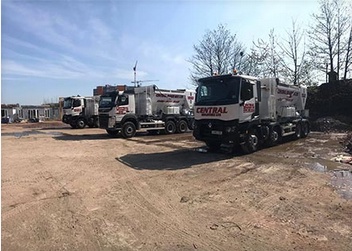Introduction:
Concrete pumping is a critical aspect of modern construction, providing a highly efficient and precise method for delivering concrete to construction sites. This comprehensive guide explores the fundamentals of concrete pumping, covering its importance, equipment involved, key techniques, and safety considerations. Understanding the basics of concrete pumping is essential for professionals in the construction industry and anyone interested in the intricacies of concrete delivery.
The Importance of Concrete Pumping:
In construction projects, the timely and accurate placement of concrete is crucial for ensuring structural integrity and efficiency. Concrete pumping plays a pivotal role in this process by providing a method to transport concrete from the mixing site to the construction site with minimal effort and maximum precision. It eliminates the need for manual labor in carrying and placing heavy concrete loads, making it an indispensable tool in large-scale projects.
Types of Concrete Pumps:
Concrete pumps come in various types, each designed for specific applications. Two primary categories are:
-
Boom Pumps: These pumps are mounted on trucks with an extendable arm or boom. The boom allows for precise placement of concrete at height or across obstacles. Boom pumps are commonly used in high-rise construction projects.
-
Line Pumps: Also known as ground pumps, line pumps transport concrete through flexible hoses. They are suitable for projects that require concrete placement at ground level or in hard-to-reach areas. Line pumps are versatile and often used in residential and small-scale commercial construction.
Key Techniques in Concrete Pumping:
Concrete pumping involves several key techniques to ensure accurate and efficient delivery:
-
Priming the Pump: Before pumping concrete, it is crucial to prime the pump by filling the system with water. This helps prevent the concrete from sticking to the internal components and ensures a smooth flow.
-
Setting Up the Pump: Proper setup involves securing the pump on stable ground, extending the boom or positioning the hoses, and connecting the delivery system to the concrete mixer. This phase requires careful planning to optimize reach and accuracy.
-
Controlled Pouring: Concrete pumping allows for controlled pouring of concrete directly into the desired location. Operators can adjust the flow rate and direction, providing precision in placement. This is particularly advantageous in projects with intricate designs or specifications.
-
Cleaning and Maintenance: Regular cleaning and maintenance of the concrete pump are essential to prevent blockages and ensure optimal performance. This includes flushing the system with water after each use and addressing any wear or damage promptly.
Safety Considerations:
Concrete pumping involves powerful machinery and potential hazards, emphasizing the need for strict safety measures. Some key safety considerations include:
-
Training and Certification: Operators should undergo thorough training and hold certifications to operate concrete pumps safely. Knowledge of equipment functions, safety protocols, and emergency procedures is essential.
-
Personal Protective Equipment (PPE): Workers involved in concrete pumping should wear appropriate PPE, including hard hats, gloves, safety glasses, and steel-toed boots. This helps protect against potential injuries and hazards.
-
Communication: Effective communication between the pump operator and construction personnel is critical. Clear signals and coordination ensure a smooth and safe concrete placement process.
-
Site Inspection: Before setting up the concrete pump, a thorough site inspection should be conducted to identify potential hazards, obstacles, and unstable ground conditions. This proactive approach helps prevent accidents during operation.
Conclusion:
Concrete pumping stands as a cornerstone in the modern construction industry, offering efficiency, precision, and safety in the placement of concrete. Understanding the basics, including the types of pumps, key techniques, and safety considerations, is essential for both seasoned professionals and newcomers to the field. As construction methods continue to evolve, concrete pumping remains a vital component, contributing to the success and durability of a wide range of projects. By embracing the fundamentals outlined in this comprehensive guide, stakeholders in the construction industry can optimize the use of concrete pumping technology for enhanced project outcomes.


No comments yet